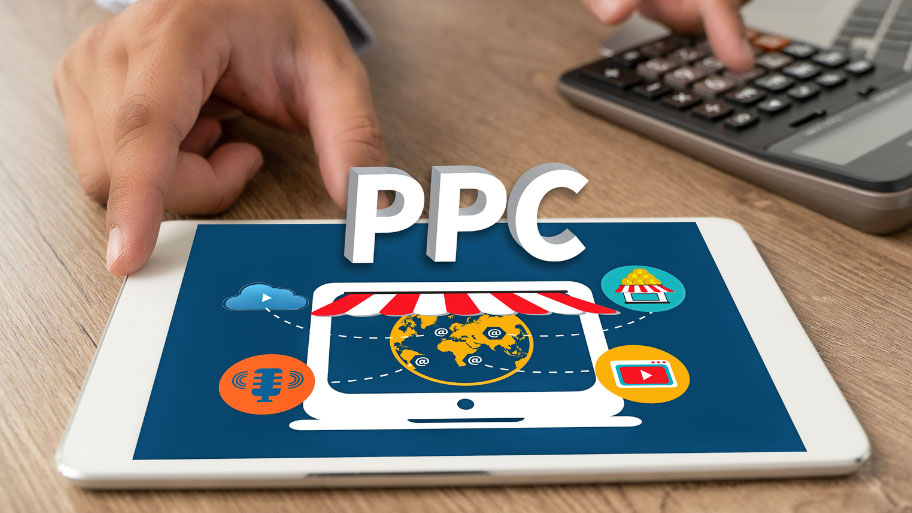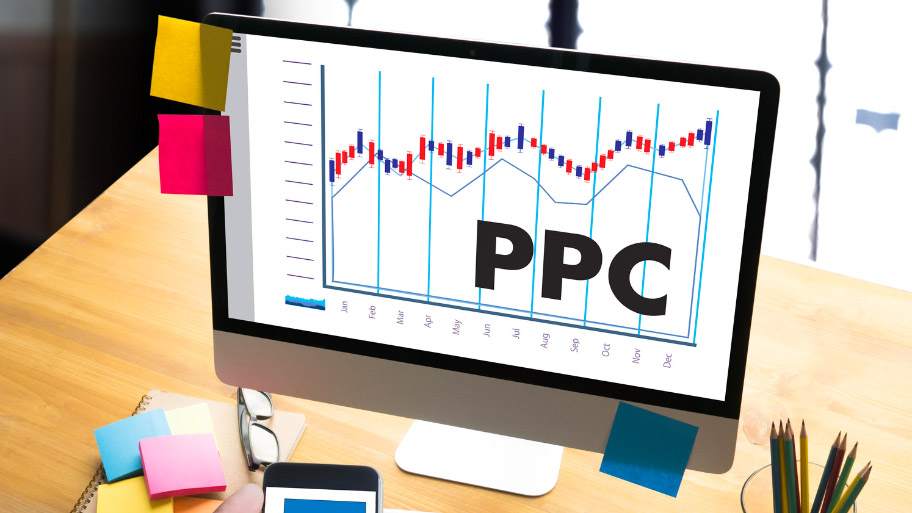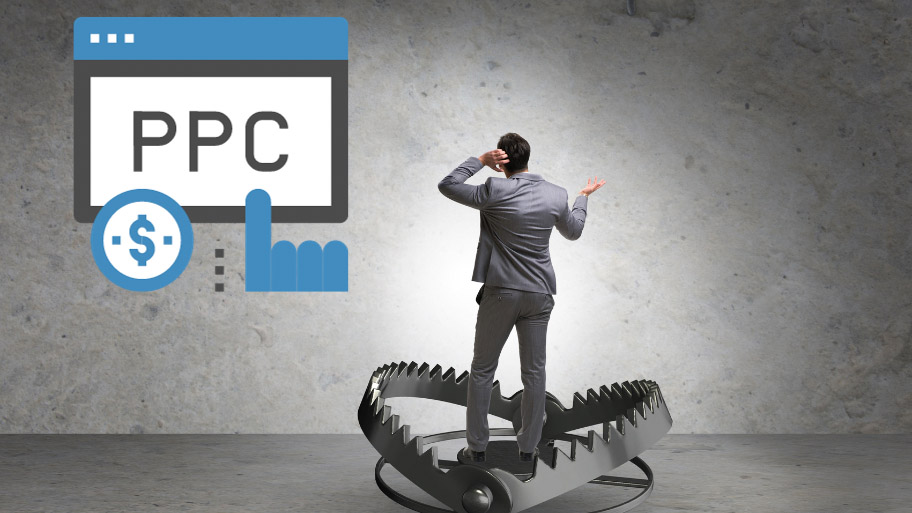Pay-per-click (PPC) advertising has revolutionized the way businesses reach their target audiences. But when it comes to local businesses, the strategy takes on a whole new dimension. PPC for local businesses is not just about getting clicks; it’s about driving foot traffic, fostering community relationships, and achieving tangible sales results.
In today’s digital landscape, local PPC has become even more crucial. Searches for local places with “near me” have grown by 150%, faster than comparable searches that do not include “near me” Source: The Media Captain. Moreover, 28% of these “near me” searches result in a purchase. This highlights the immense potential and immediate impact that PPC can have for local businesses.

The significance of PPC for local businesses can’t be overstated. It offers a level of targeting and efficiency unparalleled by traditional advertising methods. Whether you’re a small café looking to attract weekend brunch-goers or a law firm wanting to expand your local clientele, PPC can be your ticket to increased visibility and revenue.
In this easy-to-follow guide, we’ll show you step-by-step how to set up a local PPC campaign that works. From picking the right keywords to figuring out if it’s paying off, we’ve got you covered. Whether you’re new to PPC or just want to get better results, keep reading to learn how to make your ads really work for you.
The Importance of PPC for Local Businesses
Reason #1. Immediate Results in Digital Advertising
In the fast-paced world of online marketing, waiting for results can be frustrating. That’s where PPC comes in handy for local businesses. You can set up a campaign today and start seeing traffic almost right away.
No more waiting for weeks to see if your marketing efforts are paying off. This immediacy is invaluable for businesses that need to generate quick revenue or want to test a new product or service. It’s like flipping a switch and watching the customers roll in.
Reason #2. High-Quality Online Marketing Traffic
When you use PPC, your ads are displayed to an audience that’s already interested in your type of service or product. This targeted visibility increases your chances of converting a casual browser into a paying customer.
A report from Google indicates that businesses often earn twice what they spend on Google Ads. Source. This means you’re not just getting clicks; you’re getting clicks that matter. It’s quality over quantity.
Reason #3. Cost-Effectiveness of Pay-Per-Click Advertising
PPC is also budget-friendly. You only pay when someone clicks on your ad, making it easy to control costs and measure success.
This is great for local businesses that may not have huge marketing budgets but still want to compete online. Plus, with the right strategy, your ROI can be substantial, making every penny count. It’s a win-win for small businesses.
Reason #4. Geographic Targeting and Its Benefits
One of the coolest things about local PPC is that you can target ads based on location. Want to attract customers within a 5-mile radius? You can do that. This is especially useful for local businesses looking to increase foot traffic.
For instance, a quick-service restaurant chain achieved a 20% sales increase in just 27 days by using location-based targeting, according to a case study by Street Fight. The cost per action for this highly successful campaign was only $4.89.
This level of precision is a game-changer for local businesses, allowing you to focus your efforts where they’ll have the most impact.
Understanding the PPC Model

The Bidding Model in PPC
When it comes to PPC, think of it like an auction. You’re not just paying for a spot; you’re bidding against competitors for it. The higher you bid, the better your ad placement. But it’s not just about throwing money at the platform; it’s about smart spending. Your bid, combined with your Quality Score (more on that later), determines your ad’s placement.
Ad Placements and Their Impact
The location where your advertisement is displayed plays a critical role in your campaign’s success. Whether it’s in search engine results, on a social media timeline, or as a banner on a specific website, you need to be strategic about where your ad appears.
For instance, if you run a local café, you might find more success advertising on food and recipe blogs rather than general news websites.
Quality Score: What it is and Why it Matters
Think of Quality Score as your PPC performance indicator. Google uses this metric to evaluate how well your ads, keywords, and landing pages align with user intent.
A strong Quality Score can result in more favorable ad placements and potentially lower costs. It’s influenced by several factors, including the relevance of your ad copy, the user experience on your landing page, and your ad’s click-through rate (CTR).
Importance of Ad Relevance
Your ads need to be relevant to the keywords you’re targeting. Irrelevant ads can lead to low click-through rates and wasted ad spend. Imagine searching for “local Italian restaurants“ and seeing an ad for a car dealership. Not only is it irrelevant, but it’s also a missed opportunity for the advertiser.
Step-by-Step Guide to Setting Up Your First Local PPC Campaign
Step 1. Keyword Research and Tools for Local PPC
Kicking off your PPC journey begins with pinpointing the ideal keywords for your campaign. Tools like Ahrefs or Moz Pro are invaluable for this step.
If your business serves a particular location, it’s essential to weave in geographic terms into your keyword strategy. For instance, if you own a café in San Francisco, your keyword arsenal might feature phrases like “café in San Francisco“ or “San Francisco’s best coffee.”
Long-tail keywords, which are more detailed and closer to the search queries people use when they’re about to make a purchase or use voice search, should also be on your radar.
Moreover, be mindful of local events or seasonal trends that could sway search patterns.
Step 2. Creating Compelling Ad Copy
The ad copy is your first point of contact with potential customers. It needs to be engaging, relevant, and aligned with the keywords you’re targeting.
Use persuasive language but avoid being too salesy. Highlight what makes your local business unique and why a customer should choose you over competitors.
A compelling call-to-action (CTA) is a must. Phrases like “Visit us today“ or “Get a free quote“ can be effective. Include special promotions or limited-time offers to create a sense of urgency.
Step 3. Landing Page Optimization
Your landing page should be an extension of your ad copy. It needs to deliver on whatever promises you made in the ad.
The design should be clean, and the CTA should be clear and easy to find. For local businesses, adding a map or directions can be a useful feature.
Make sure the page loads quickly; a delay of even a few seconds can result in lost conversions.
User reviews and testimonials can also add credibility to your landing page.
Step 4. Budgeting and Bidding Strategies
When it comes to allocating funds for your PPC campaign, prudence is key. Begin with a modest budget and fine-tune as you gather more data.
In terms of bidding, you’re not limited to just one approach. You can opt for manual bidding, let algorithms do the work with automated bidding, or even blend both.
For businesses focusing on local reach, geo-specific bidding can be a strategic move to maximize your ROI. Keep an eye on your metrics and adjust your strategies as needed.
Remember, it’s not just about clicks; it’s about conversions. Make sure to track conversion rates closely.
Advanced Strategies for Maximizing ROI in PPC

Strategy #1. Smart Keyword Selection
Picking the ideal keywords is more than just focusing on high search traffic. Use tools like SEMrush or Ahrefs to identify keywords that are not just popular but also highly relevant to your local business.
Long-tail keywords may have fewer searches, but they often result in better conversions. Don’t overlook local-specific keywords that can drive foot traffic to your physical location.
Regularly update your keyword list to adapt to market trends.
Strategy #2. Effective Ad Copy Techniques
The text in your ads is often the first interaction potential customers have with your business. Make it impactful by addressing the user’s specific needs or challenges.
Always include a compelling call-to-action (CTA) that guides them on the next steps. Dynamic keyword insertion can also personalize your ads, making them more relatable to individual search queries.
Test multiple ad variations to find the most effective messaging. Utilize emotional triggers to enhance engagement.
Strategy #3. Landing Page Best Practices
Your landing page should be more than just visually appealing; it should be a conversion machine.
Make sure it’s optimized for mobile users, loads quickly, and has a clear and direct CTA. The content should seamlessly align with the ad that directed the user, ensuring a cohesive user journey.
Use A/B testing to continually refine your landing page for better results. Include customer testimonials for added credibility.
Strategy #4. Use of Negative Keywords
Negative keywords are your safeguard against irrelevant clicks that cost you money.
By specifying what you don’t want to rank for, you can ensure that your ads only appear for queries that are genuinely relevant to your business.
Regularly review your negative keyword list to keep it up-to-date. This can save you a significant amount in ad spend over time.
Strategy #5. Seasonal or Event-Based Campaigns
Leveraging seasons or local events can give your PPC campaigns a timely boost.
For example, a local flower shop could run special PPC campaigns around Valentine’s Day or Mother’s Day to capture more sales during these peak times. Tailoring your campaigns to coincide with local festivals or sporting events can also be a smart strategy.
Consider using countdown timers in your ads for time-sensitive promotions.
Measuring Success and ROI in Local PPC
KPIs to Track
To gauge the effectiveness of your local PPC campaigns, it’s essential to focus on key performance indicators (KPIs). These include Click-through Rate (CTR), which measures the percentage of clicks your ad receives based on its total impressions.
Conversion Rate tells you the percentage of clicks that result in a desired action, such as a sale or sign-up. Cost Per Acquisition (CPA) calculates the average cost to acquire a customer. These metrics not only show the health of your campaign but also offer insights into areas for improvement.
Tools for Measurement
There are various tools available for tracking the performance of your PPC campaigns.
Google Analytics is a popular choice, offering in-depth insights into user behavior and conversion rates. Other tools like SEMrush and Ahrefs also provide valuable data that can help you optimize your campaigns.
Utilizing these tools effectively can make a significant difference in your campaign’s success.
A/B Testing Strategies
Experimentation is key to fine-tuning your local PPC campaigns. A/B testing allows you to run two variations of an ad or landing page side by side.
This way, you can assess which elements resonate more with your audience. Whether it’s the call-to-action, the headline, or even the images, A/B testing helps you identify what’s working and what needs improvement.
How to Interpret PPC Data and Make Adjustments
Understanding your PPC data is more than just a numbers game; it’s about translating those numbers into actionable insights.
For instance, a high CTR but low conversion rates could mean your landing page needs tweaking.
Conversely, a low CTR but high conversion rates might indicate that your ad copy is doing its job but could be more enticing.
Regularly revisiting your data and making informed adjustments is key to maximizing your ROI.
Common Pitfalls in Local PPC Campaigns and How to Avoid Them

Pitfall #1. Budget Overspending
One of the most common mistakes in local PPC is overshooting your budget. It’s easy to get carried away with bidding wars, but remember, the goal is a profitable ROI.
Set a realistic budget and stick to it. Use automated rules to pause campaigns that exceed your set limits.
Pitfall #2. Poor Keyword Choices
Selecting the wrong keywords can lead to irrelevant traffic and wasted spend. Use keyword research tools to find terms that are not only relevant but also have a high intent to convert.
Keep an eye on your search term reports and refine your keyword list regularly.
Pitfall #3. Ineffective Ad Copy
When your ad copy misses the mark, it’s like throwing a party and forgetting to send out invitations.
The key is to craft a message that not only grabs attention but also speaks directly to the local issues your potential customers care about.
Don’t forget to include a persuasive call-to-action (CTA) that guides them on what to do next.
Pitfall #4. Landing Page Issues
Think of your landing page as the final destination in your customer’s journey. If they arrive and find a confusing layout or irrelevant information, they’re likely to leave.
Your landing page should be a seamless extension of your ad, with a straightforward CTA and content that fulfills the promise of your ad.
By being aware of these common pitfalls and taking proactive steps to avoid them, you can run more effective and profitable local PPC campaigns.
Wrapping Up Your Local PPC Journey
As we’ve navigated through the intricacies of local PPC, we’ve covered essential topics from understanding the PPC model to advanced strategies for maximizing ROI.
We’ve also touched on common pitfalls and how to sidestep them. Local PPC is a powerful tool that can drive targeted traffic, increase sales, and boost your brand’s local presence. But like any tool, its effectiveness depends on how well you wield it.
Now that you’re armed with this knowledge, it’s time to take action. Don’t just sit on the sidelines; dive in and start optimizing your local PPC campaigns today.
The road to local PPC success is paved with well-chosen keywords, compelling ad copy, and strategic budgeting. So why wait? Your potential customers are out there, and with the right PPC strategies, you can reach them more effectively than ever.
Take the first step today and set the stage for a successful local PPC journey!
Your Go-To Resources for Local PPC Success
If you’re looking to expand your local PPC know-how, here are some handpicked suggestions:
Equip yourself with these resources to become a local PPC pro!
Your Quick Guide to Local PPC: Top 10 Questions Answered
Your Shortcut to PPC Success: RB Web Development
We get it—PPC for local businesses sounds simple enough. You choose some keywords, set a budget, and wait for the clicks to roll in. But anyone who’s dabbled in PPC knows that ensuring its success is anything but a walk in the park. It’s a time-consuming endeavor that requires constant monitoring, tweaking, and a deep understanding of ever-changing algorithms.
That’s where RB Web Development comes in. We take the guesswork and grunt work out of PPC campaigns so you can focus on what you do best—running your business. With our expert team by your side, you’ll not only save time but also maximize your ROI, ensuring that every penny spent is a step toward greater profitability.
Ready to take your local PPC campaigns to the next level? Contact RB Web Development today and let’s turn those clicks into customers.

About the Author
RB Web Development, based in Norwalk, IA, was founded in 2008 by Rob Batzler. With a web design journey starting in 2000, Rob sharpened his skills at renowned Des Moines firms before launching his trusted agency. Rob’s dedication to web design and his in-depth industry knowledge make RB Web Development a go-to solution for businesses.






